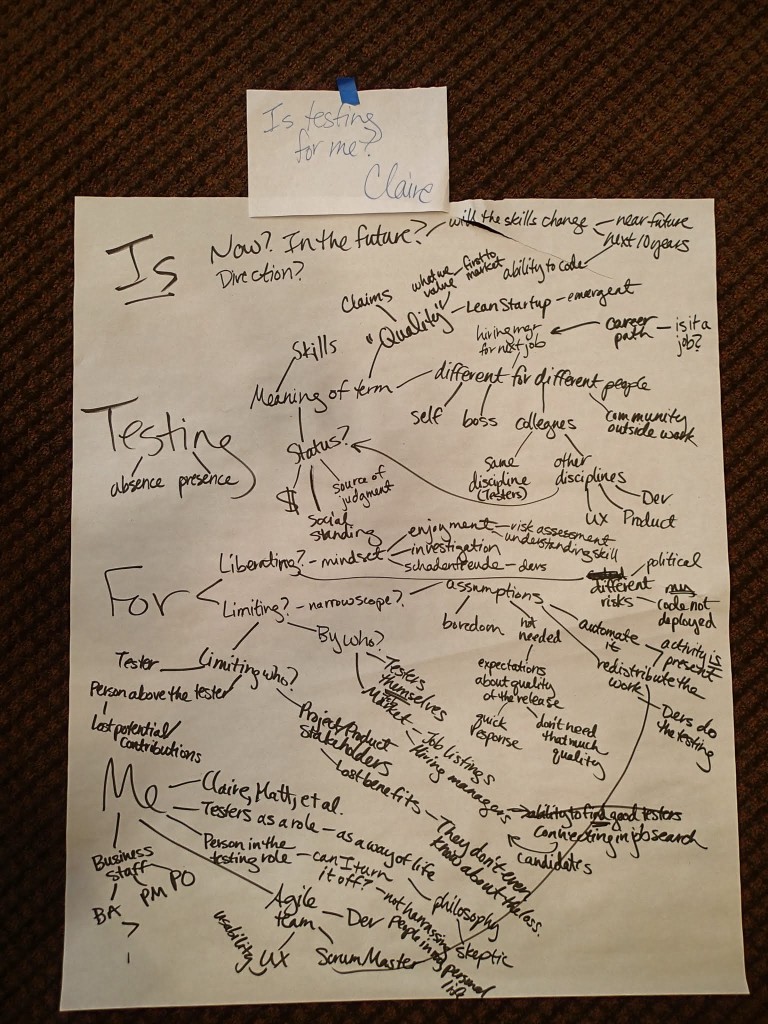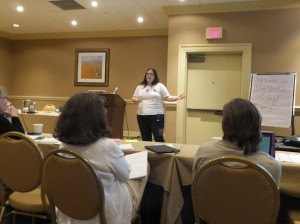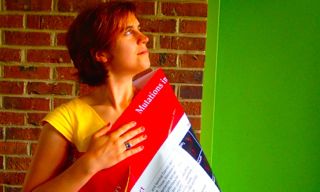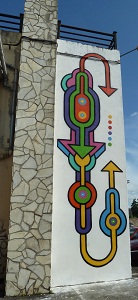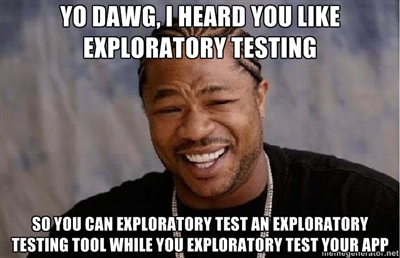At Agile2018, I attended Richard Seroter’s Product Ownership Explained session, where I heard about bad and good product owners. Product ownership/management has many facets including
- advocating processes and tools
- style of leadership
- customer interactions
- relationship with engineers
- approach to continuous improvement
- product lifecycle perspective
- sourcing backlog items
- decomposing work
- running through a sprint
- meeting involvement
- approach to roadmap
- outbound communication
Now I’ve been working alongside many customer proxy team members (e.g. business analyst, product owner, product manager) over the years. I’ve learned how to create testable, executable, deliverable user stories in a real-world setting. I wasn’t going into this talk blind. I just haven’t always focused on the Product role.
This time, I looked at the role with the mindset of what it would take for me to check all the boxes in the “good” list. As each slide appeared, my list of TODOs lengthened. I started to feel overwhelmed by the number of things I wanted to improve…

“How you doin’, honey?” “Do I have to answer?!?”
I walked out of that talk thinking I’m not sure I want to sign up for this epic journey. The vision of the idyllic end state was more daunting than inspiring. How could I possibly succeed at this enormous task? Would I want to sign up for that? My initial reaction was no! How could I take on all the technical debt of stretching into a new role like Product? How long would the roadmap to “good” take?
Analysis
When I evaluate things off the cuff, I often consider good-bad-indifferent. Maybe knowing what “good” and “bad” look like wasn’t helping me. I knew I didn’t want to be merely “indifferent”… maybe what I really wanted to know was this:
What does a minimum viable product manager look like?
One of my big takeaways from Problem Solving Leadership (PSL) with the late, great Jerry Weinberg was limiting work in process (WIP) or “one thing at a time” (as close to single piece flow as possible) improves effectiveness. If I take that approach to a PO/PM role, I’m afraid that I would completely fail. So I will reduce the practices to as few as I possibly can without completely losing the value of the role. I want only the *critical* path skills or capabilities! Everything else can be delegated or collectively owned or done without. So what can I discard?
In this thought experiment, I’m proposing finding the least possible investment in each essential aspect of the PO/PM role that would move from bad past merely indifferent to viable (but only just!). I needed to reduce my expectations! If I allow minimum viable to rest somewhere in my default scale, then it fits between indifferent and good. That means I deliberately do *not* attempt to inject all of the good practices at once. So let’s revisit the axes of expertise and the lists of behaviors that are good and bad…
What’s the least I could do?
Decomposition
Advocating processes and tools
Good: contextual & explanatory & collaborative (fitting process to team + pragmatic tool choices + only important consistency + explains process value + feedback leading to evolving)
Minimum viable: pragmatic minimalism (choose a simple process & let practices earn their way back in as value is explained + choose an available tool + allow consistency to emerge + request feedback)
Indifferent: status quo (follow existing process/ceremony w/o questioning + let others choose tools + don’t justify)
Bad: dogmatism (one practice fits all + adhere to ceremony + prescribed toolchain + standardization + trust process + don’t justify)
Style of leadership
Minimum viable: leads by example (models behaviors for others without trying to modify their behaviors) + doesn’t worry about respect + consultative decisions + experiments/loosely decides + sometimes available to the team but not constantly + flexible + defaults to already available metrics
Customer interactions
Minimum viable: meets with customers at least once + builds casual relationship with a key customer + gets second-hand reports on Production pain + occasional customer visit + default information sources
For me, this one slides a bit too far toward indifferent… I’m not sure how little I could care about customers and still get away with being acceptable at PO/PM…
Relationship with engineers
Minimum viable: physically co-locates when convenient + T-shaped when it comes to the technical domain (i.e. aware but not trying to develop that skill as an individual contributor) + attends standup + shares business/customer/user information at least at the beginning of every epic + champion for the product & trusts everyone on the team to protect their own time
Approach to continuous improvement
Minimum viable: default timebox + takes on at most 1 action item from retrospective, just like everyone else + plans on an ad hoc/as needed basis (pull system) allowing engineers to manage the flow of work to match their productivity + prioritizes necessary work to deliver value regardless of what it’s called (bug, chore, enhancement, etc)
Product lifecycle perspective
Minimum viable: tweaks customer onboarding in a small way to improve each time + cares about whole cross-functional team (agile, DevOps, etc) + asks questions about impact of changes + allows lack of value in an existing feature to bubble up over time
Sourcing backlog items
Minimum viable: occasionally talks to customers + cares about whole cross-functional team (including Support) + backlog is open to whole team to add items that can be prioritized + intake system emerges + tactical prioritization
I do have twinges about the lack of strategy here, so I guess I’m looking at this part of minimum viable Product *Owner* (i.e. the mid-range focus that Richard points out in his 10th slide).
Decomposing work
Minimum viable: progressive elaboration (i.e. I need to know details when it’s near term work and not before) + thin vertical slices and willing to leave “viable” to the next slice in order to get a tracer bullet sooner + trusts the team to monitor the duration of their work & to self-organize to remove dependencies (including modifying story slicing)
Running through a sprint
Minimum viable: doesn’t worry about timeboxes (kanban/flow/continuous/whatever) + focus on outcome of each piece of work (explores delivered value) + releases after acceptance (maybe this is just continuous delivery instead of continuous deployment, depends on business context)
Meeting involvement
Minimum viable: collaborates with team members to plan as needed (small things more often) + participates in retrospectives + ongoing self-study of PO/PM
Approach to roadmap
Minimum viable: priorities segmented by theme + roadmap includes past delivery/recent accomplishments + adjusts communication as needed/updates for new info + flexible timeline in a living document + published roadmap accessible to all stakeholders on self-serve basis
Outbound communication
Minimum viable: allows org to self-serve info + shares priorities with manager & customers + environment for continuous self-demo/trying features + transparency
What are the minimum viable versions of the tools of a product owner?
- Backlog – list of ideas not fleshed out until it’s time to run them
- Sprint planning – ad hoc meetings in a pull system initiated by the need for work definition to execute
- Roadmap – technical vision of system capabilities + compelling story of the product value proposition
- Prototyping, wireframing – whiteboard pictures + text-based descriptions
- Team collaboration – a big TODO list that everyone can access
- Surveying/user testing – chat program that both team & user can access
- Analytics – NPS score informally collected from customer conversation
- Product visioning – I think this goes in with Roadmap for me?
So I’ll agree that the PO/PM role is critical and necessary. I would like for creative problem solvers to fill the role – and to be fulfilled by the role! In order for that to be viable, for people to grow into a Product role, there needs to be education on how to begin – and it can’t be spring-fully-formed-from-the-head-of-Zeus! Christening someone PO/PM doesn’t endow them with sudden wisdom and insight. Skill takes time to develop.
Set realistic expectations for beginners. Help teams to welcome people to grow in the role by offering both challenge and support from all the team members. As with any team need, the agile team has collective ownership to solve the problem, not relying on a single point of failure in the role specialist. Having a beginner PO/PM is an excellent time to reinforce that!

If I were a Product Manger, I would definitely prefer to be a full-featured representative of that specialization! However, I encourage you to revisit Richard’s presentation and do your own decomposition of the Product role. What is absolutely essential? What can you do without?
What is *your* minimum viable Product Manager?
